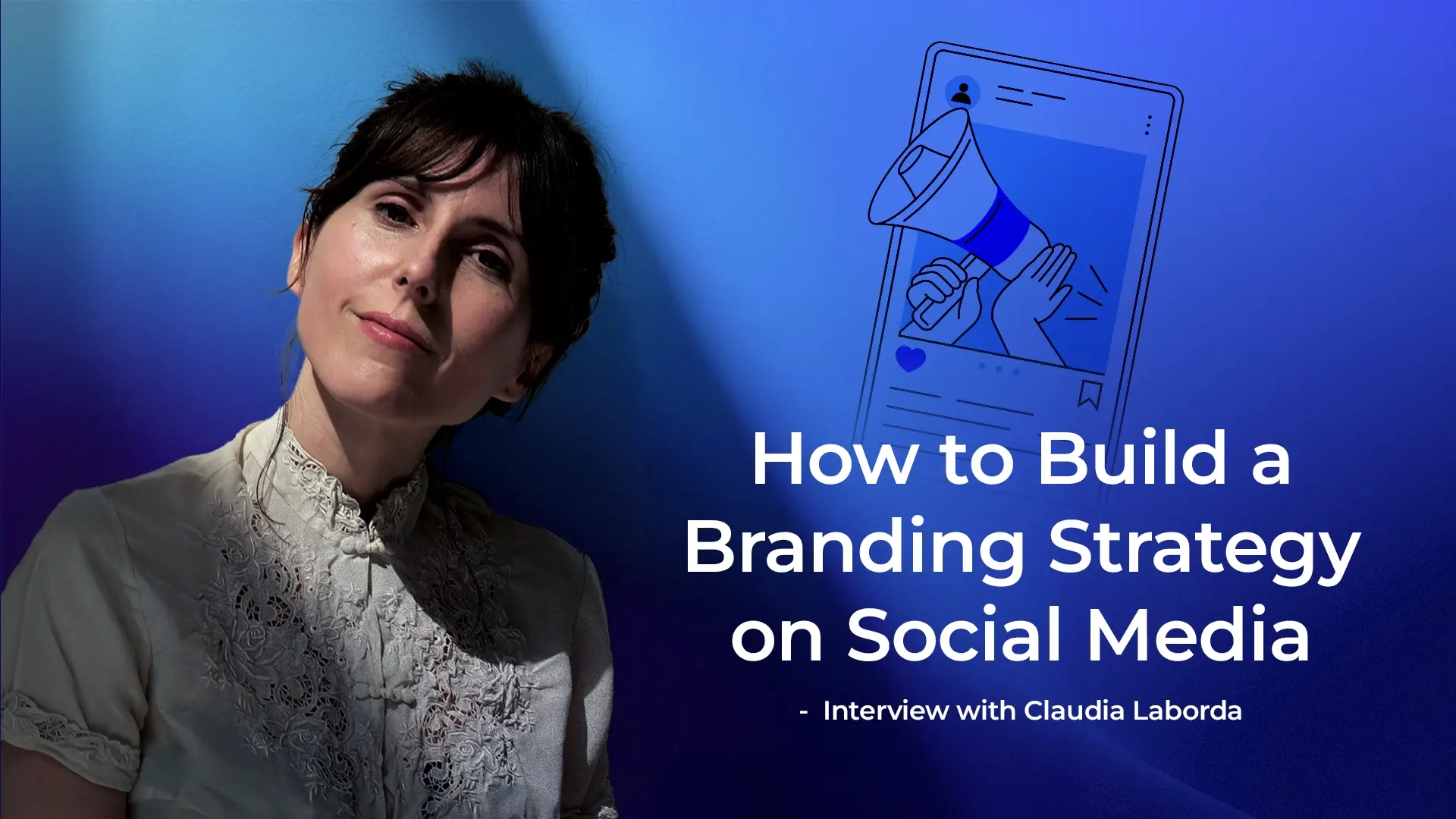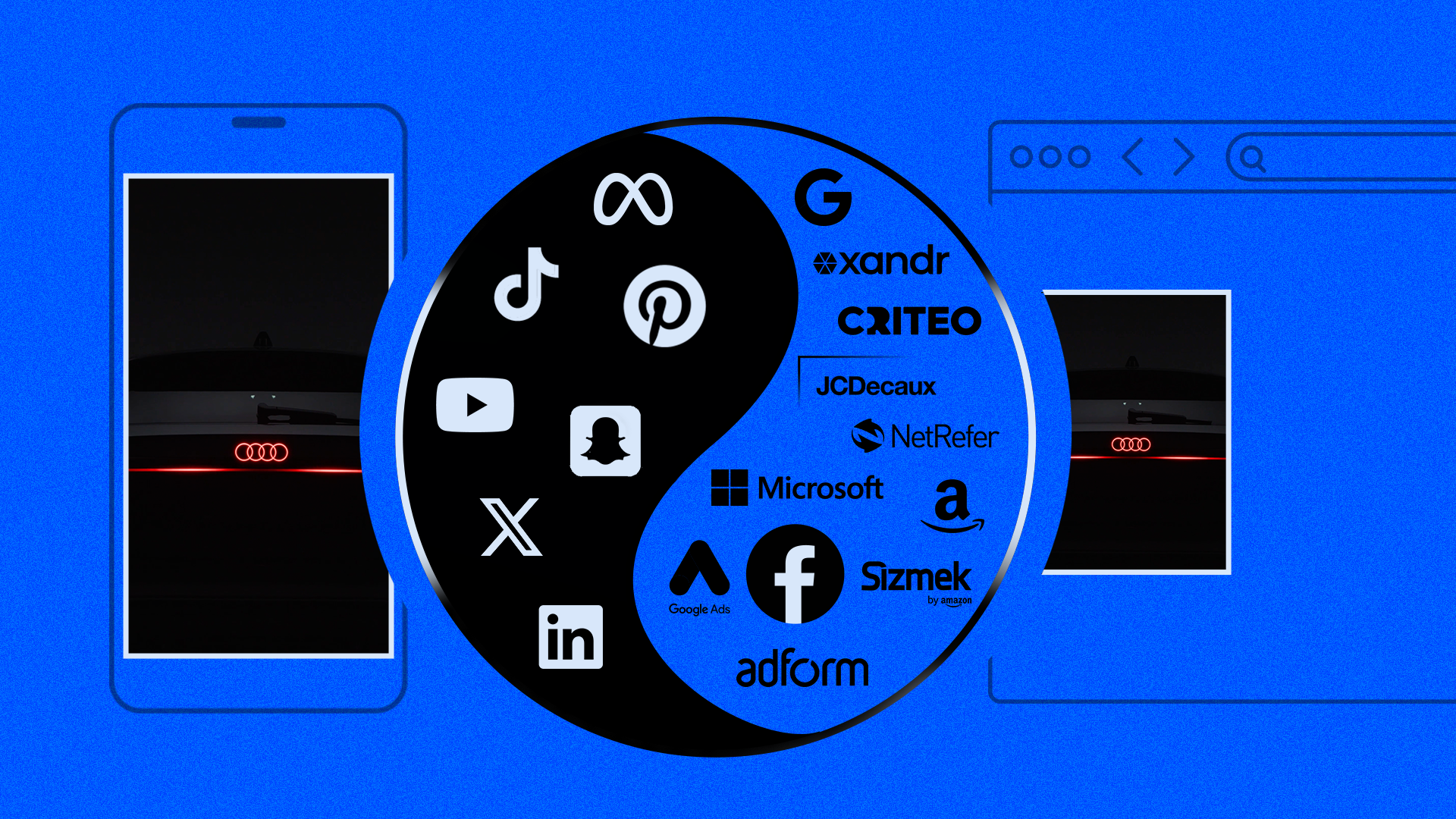Brand identity today doesn’t just exist on social; it thrives there. We sat down with Claudia Laborda, Bannerflow’s Social Media Manager, to discuss why social media is central to branding in 2025. From voice and visuals to community and creativity, Claudia offers her perspective on how brands can connect authentically and stand out.
Building a Branding Strategy on Social Media
Why is social media more than just a distribution channel in 2025?
Social media started as a space to interact with other people through shared interests. While it has shifted toward a marketing tool over time, it still is a dynamic space for real-time dialogue, co-creation, and community, not just content distribution.
How do you see the relationship between brand identity and social media presence?
Your brand identity doesn’t just exist alongside your social media presence, it lives and breathes within it. Every post, interaction, and visual choice showcases your values, tone, and personality, and the audience validates that daily. Clarity on who you are and how you want to be perceived is essential to building and sustaining your brand in the social space.
What makes social media a powerful tool for shaping perception and awareness?
Through social media, stories and voices are amplified creating a specific perception of your brand, building trust and visibility faster than traditional channels. Gen Z and onward generations are born and raised in the digital era. Social platforms are not just communication tools, they’re spaces where connections are formed and identities are defined.
How can social help brands connect emotionally with their audience?
The key element is the way it enables emotional connection through authenticity, empathy, and shared experiences.
What advice would you give to a brand that treats social as an afterthought?
If you treat social as an afterthought, you won’t be able to shape how people connect with and remember your brand, because relevance on social media comes from building community, telling a consistent story, and showing up where conversations are actually happening.
Finding and Protecting Your Brand Voice
What’s the first step in defining a consistent brand voice for social?
Start by clearly defining your brand positioning and deeply understanding your audience, because voice and platform choices will shift depending on whether you're speaking to Gen Z, Boomers or millennials.
How do you ensure the brand voice remains recognizable—even across different formats like memes, carousels, or videos? How do you adapt tone for different platforms (e.g., LinkedIn vs. Instagram) without losing brand cohesion?
Every piece of content should be tied to your brand’s core tone and values. Then you can flex the format to your audience and the specific channel. You adjust the formality and style per platform while keeping the same personality and message at the core.
What red flags do you watch for when brand voice starts drifting?
If the messaging is mixed, or the content feels off across channels, that means the voice is no longer aligned.
How should teams document or align around tone of voice?
Creating a guide with real examples and do/don’t lists that can be updated when needed, will help you keep the voice aligned across all your channels.
Designing for Consistency Across Channels
Tips for growing brand consistency, voice, and engagement across channels in 2025?
Create a clear brand voice guide, then tailor it per platform to stay consistent and relevant. It’s important to have a unified brand voice, since it creates trust, and prioritizes community engagement. That means understanding channels are places for dialogue, not places to be marketed. The audience wants to be seen, heard and involved.
What are your go-to tips for visual consistency across social channels?
When it comes to visual consistency, the first thing to do is to decide on a color palette, consistent typography, and unified imagery style. Apply the same framing, tone, and filters so each post feels like it’s from the same brand family, at a glance. This will give your brand consistency and will contribute to brand fidelity.
How important is brand templating or design systems in your daily workflow? How do you brief designers to ensure assets stay on-brand?
In order to be productive and also creative in the long run, templates are essential. If you have a team of designers, it’s also important to provide them with brand guidelines, reference examples, target audience insights, and key messaging. Specify do’s/don’ts and required formats up front.
What’s your process when launching a new campaign or series visually?
To launch a new campaign, start with a creative concept, adapt into template variations for different platforms, test a few iterations, then roll out with a content calendar.
What common mistakes do you see brands make when it comes to visual identity on social?
Inconsistent tone, overusing trends that damage brand identity, neglecting accessibility, and failing to adapt designs to platform-specific formats.
Using Data Without Losing Creativity
What kind of performance metrics are most useful for shaping your content decisions?
You need to first ask yourself what your objective is. From there, you can choose the most important KPIs. Most tracked KPIs are engagement rate, views/watch time, conversion rate, plus qualitative feedback from comments.
How do you balance creativity and originality with data-backed choices?
Use data to guide direction, but it should not decide on every detail. Leave room for experimentation and brand personality.
Can you spot when a creative decision is being made too rigidly by numbers?
When content lacks emotional resonance, or ignores brand voice in favor of chasing metrics alone.
How do you turn insights (e.g., engagement dips) into actual improvements?
Testing. Try adjusting variables (format, posting time, creative angle), and test small iterations before making bigger shifts.
What’s one way social teams can better connect creative strategy with data?
Sync with designers, writers, and analysts on a regular basis to align on both storytelling goals and performance learnings in real time.
The Tools and Processes That Help
What tools or frameworks help you stay efficient and organized?
Notion helps me manage my workflow with a fully customizable calendar, tailored by channel. This ensures that all content is both relevant and on-brand. Later.com allows me to schedule posts in advance and track detailed analytics for each channel over time, helping me measure performance and optimize my strategy. It is important to also have a listening tool to understand how and where your brand is mentioned.
How do you collaborate with design, content, or performance teams on social assets?
We align early on objectives, share briefs in content calendars, and keep feedback loops short to maintain momentum and test.
Do you follow a set workflow from idea to publish? What does that look like?
Yes: ideation → design/content creation → review → scheduling → publish. This can change and speed up very quickly when hopping on the latest trends.
How do you manage approvals or stakeholder input without losing momentum?
Clear deadlines, centralized feedback in one tool, and limited revision rounds keep things moving.
What part of the process would you automate or improve if you could?
Automating analytics reporting so we can see live updates that can also be easily shared across the team, and initial content scheduling to free more time for creative work.
What's one piece of advice you wish every brand-new Social Media Manager knew?
Trust your expertise. Everyone will have opinions on social media, but it’s your informed judgment that should lead the way.
What’s something you’ve changed your mind about in social branding?
Consistency doesn’t need to be set in stone. Audiences evolve, and this impacts the way we talk to them and therefore the social branding. Changing to adapt without losing the brand essence, that’s the key.
What’s next for branding through social — what excites you?
Community building is moving to the heart of social strategy. Brands must put their audiences at the center. More than ever, audiences crave authentic, human interactions, and brands need to join conversations naturally to earn attention and trust. B2B brands often fear this will dilute their voice, but the reality is audiences now expect it. Personalization builds trust, and trust drives choice.







